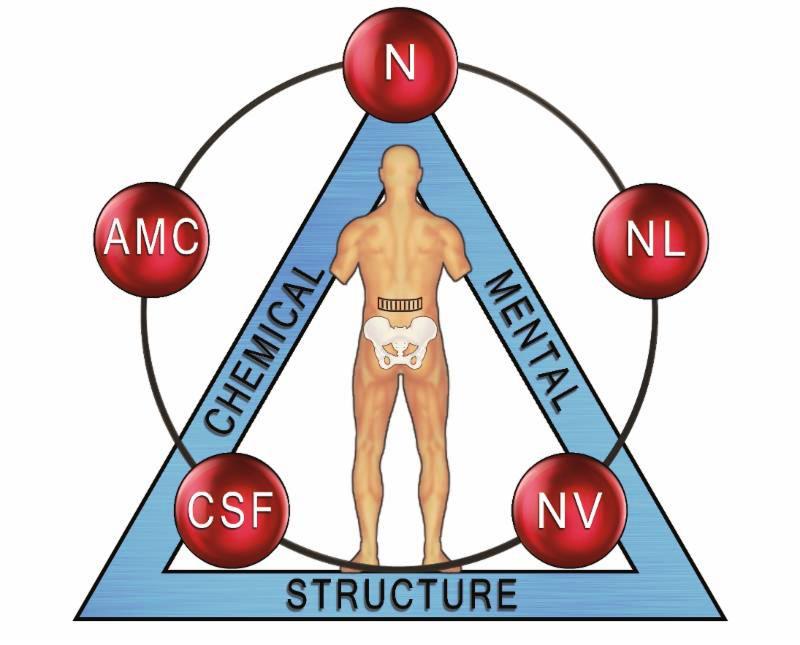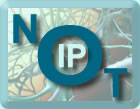


What is Applied Kinesiology
Applied Kinesiology (kih-nee'-see-awl'-oh-jee) is a a functional neurological assessment and treatment process that extends the neurological examination in both the medical and chiropractic context. This pioneering was developed by Dr. George Goodheart, a Michigan based chiropractor in 1964. Beginning with a small group of dedicated followers, the work continued to grow and eventually develop into an international academic organization called the International College of Applied Kinesiology (I.C.A.K.). Link to ICAK-usa description statement [PDF File].
Of the many advances in Applied Kinesiology, the most well known is the diagnostic procedure called Muscle Testing [PDF File]. This procedure creates a monitored primary feedback mechanism between the nervous system and the skeletal muscles. An examiner will typically use the straight-arm test (deltoid muscle) to evaluate how well the muscle will resist an externally variable force. If the muscle is capable of ‘resisting’ then the examiner can proceed with a second principle called therapy localization, a diagnostic scanning tool developed in 1974. This unique procedure can be used to ascertain the status of most neuro-physiological events in the body revealing whether an event is physical, chemical, emotional, or a memory. If a neuro-physiological receptor on the body service is identified to be in deficit, the muscle will exhibit that same deficiency as a weak muscle test. This method, when properly applied, functions as an efficient diagnostic tool that guides the practitioner in an accurate diagnosis as well as development of an appropriate treatment program.
A common symbol of AK is a triangle showing the primary foundation of health with an overlay of a circle with 5 additional smaller circles representing the primary common therapeutic modalities. Applied Kinesiologist may also use the name Professional Applied Kinesiologist (P.A.K.). This recent name change is show additional training and certification within applied kinesiologist practitioners whom have a license to diagnose. To learn more about this work visit the International College of Applied Kinesiology -United States chapter at www.icakusa.com or International Chapter www.icak.com. Additional articles can be viewed on-line via International Journal of Applied Kinesiology and Kinesiologic Medicine.
Useful General Knowledge
1. No plastic containers in microwave.
2. No water bottles in freezer.
3. No plastic wrap in microwave.
Johns Hopkins has recently sent this out in its newsletters.
- Dioxin chemicals causes cancer, especially breast cancer.
- Dioxins are highly poisonous to the cells of our bodies.
Don't freeze your plastic bottles with water in them as this releases
dioxins from the plastic.
Recently, Dr. Edward Fujimoto, Wellness Program Manager at Castle Hospital was on a TV program to explain this health hazard. He talked about dioxins and how bad they are for us. He said that we should not be heating our food in the microwave using plastic containers. This especially applies to foods that contain fat. He said that the combination of fat, high heat, and plastics releases dioxin into the food and ultimately into the cells of the body. Instead, he recommends using glass, such as Corning Ware, Pyrex or ceramic containers for heating food. You get the same results, only without the dioxin. So such things as TV dinners, instant ramen and soups, etc., should be removed from the container and heated in something else. Paper isn't bad but you don't know what is in the paper. It's just safer to use tempered glass, Corning Ware, etc. He reminded us that a while ago some of the fast food restaurants moved away from the foam containers to paper. The dioxin problem is one of the reasons.
Also, he pointed out that plastic wrap, such as Saran, is just as dangerous when placed over foods to be cooked in the microwave. As the food is nuked, the high heat causes poisonous toxins to actually melt out of the plastic wrap and drip into the food. Cover food with a paper towel instead.
Manual Muscle Testing (MMT)
MMT is a phenomena commonly associated with Applied Kinesiology but also has a long history with many studies and published papers to include recently: Kendal et al. 2005, Panjabi 2006, and Cuthbert & Goodheart in 2007.
MMT is a primary diagnostic tool which is used as a dynamic monitored primary feedback mechanism between the nervous system and the skeletal muscles.
Some of the main attributes of MMT * is to identify and monitor aberrant physiology between:
- Neurologic disorganization
- Viscerosomatic relationships (aberrant autonomic dysfunction)
- Toxic chemical influence
- Nutritional inadequacies
- Spinal segmental dysarthria
- Dysfunction of cranial bones & cerebral spinal fluid dynamics
- Adverse mechanical traction on spinal dura and meningeal membranes
- Myofascial dysfunction
- Peripheral and Cranial Nerve Entrapment
- Lymphatic and vascular impairment
- Meridian system imbalance
It should also be noted that neoplasms being non-nerve innervated thus not connected to the nervous system renders MMT non-influential.
Academically, MMT is explained with standard neurophysiology:
Simply, all MMT ultimately is testing the Central Integrative State (CIS) of the ventral horn within the spinal cord. The CIS is influenced by both descending fibers from higher brain centers (to include reflexogenic systems within the cerebellum and brainstem) as well as incoming afferent stimulus from sense organs from the viscera and somatic tissues. The total effect of [aberrant] stimulus (synaptic activity) can be either inhibitory or excitatory extending its influence on the CIS which is measurable through a manual muscle test as a conditionally inhibited or conditionally facilitated muscle test.
Additional explanation of neurophysiological pathways involved in MMT also described by
Richard Belli, D.C., DACNB, FABNN
* Additional information is available in a recent publication,
"Applied Kinesiology Essentials" by Scott Cuthbert 2013
Gangassas Press ISBN: 978-0-9887452-1-6

